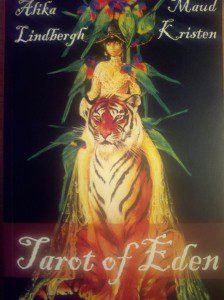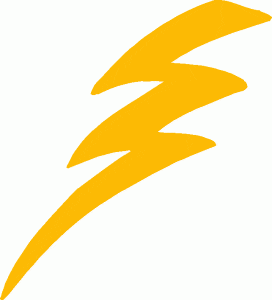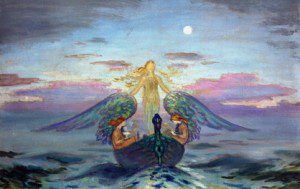 My first Tarot deck fell into my hands when I was 17. It was the old Rider-Waite deck, the only one publicly available in that era, and a very good set of cards for newbies. However, as I spread and studied the cards, I did not feel like a newbie. I felt back in a family, a family that not only included the Fool and the Hanged Man and the troublesome Fives and the ruthless Queen of Swords, but the people who designed the system behind these cards, and used the images for purposes other than card readings.
My first Tarot deck fell into my hands when I was 17. It was the old Rider-Waite deck, the only one publicly available in that era, and a very good set of cards for newbies. However, as I spread and studied the cards, I did not feel like a newbie. I felt back in a family, a family that not only included the Fool and the Hanged Man and the troublesome Fives and the ruthless Queen of Swords, but the people who designed the system behind these cards, and used the images for purposes other than card readings.
In dreams, especially in long lucid nights when the veils between the worlds were thinner than muslin curtains, I found myself among living Tarot trumps and court cards, and among characters who adopted their guises. As an undergraduate, I did Tarot readings at benefits, dressed as my notion of a Gypsy fortune teller with a silk head scarf. My style was swift and simple. Instead of puzzling over the bookish attributions of the cards, I would quickly scan the field – typically the ten-card spread called the Celtic Cross – and note what was dominant and what was missing. Bereft of trumps: ah, the gods and powers of the deeper world are staying out of this one. Lots of face cards: the issue turns on other people, or perhaps multiple aspects of the querent’s self. An armory of swords: Oh. dear. Pain, self-loathing, illness and self-checking are likely unless the person can get out of his or her current mindset. The cards came stamped with individual meaning, confirmed by a sense of what had followed from each, alone or in certain conjunctions, time after time. Seven of Swords: Giving up too soon. Five of Cups: the risk of literal death, instead of the death of ego offered by Death himself.
You’ll find a thousand suggestions for what each card means in the vast literature of Tarot available in almost any bookstore or crystal shop today. I am not suggesting that my attributions are correct for you, merely recalling that they came to me untutored. And when I trusted them without thinking overmuch, they were often accurate. When I turned a card, I would feel, I know you and I remember what happened when you showed yourself then, and then again. The sense of precedents went beyond my young life. There was something more. As my friend Mary Greer explains so well, Tarot images can be mirrors for the self. They can also be windows to something beyond the present self. As a teen, I remembered that we may be able to look through the painted image of a card, into a scene beyond it. The border of the card became a window.
When I looked through that window, I might find myself glimpsing an event in the future, or the dramas of lovers or rivals, or the play of elemental forces, or the workings of spirits behind the curtain of the world. I wouldn’t say too much of this in those campus fairs. Sometimes I would suppress altogether things that I saw. I did that the time I looked through the Five of Cups and saw death on a road, a car unable to make a bend on a narrow road. I spoke only of the need for the young couple who had plonked down their dollar for a lark to be careful driving. When I learned that one of them died in the accident I had seen through the Tarot window, I stopped reading for others, because I did not want to see death on another road, and face the same terrible dilemma: Do I pass on a dreadful vision that might bend the mind of the hearer in a way that would make its enactment more likely, or hold back on details that they might be able to use to stay safe? I had much to learn – or remember – about our relations with the future. The crucial thing to know about that is that any future event we can foresee (which we do most accurately in dreams) is a possible future and that if we are smart and bold, we may be able to change a possible future event for the better.
Years, then decades, passed. Tarot decks of all kinds began to bloom like impatiens. I started collecting them, and took up Tarot again to get a second opinion on things, and for daily self-reflections. Of course, when people heard that I read Tarot they wanted me to do readings for them, and I yielded from time to time. The decks I preferred for formal readings were those that most closely followed the Golden Dawn system, the one to which I had felt connected on the inner planes since boyhood: Rider-Waite, Servants of Light, Gareth Knight’s deck, the version of the old G.D. tarot that eventually came on the market, and Aleister Crowley’s Thoth deck. The Crowley deck exercises formidable attractions for me – as for many others, including Angeles Arrien – because of the beauty of the images painted by Lady Frieda Harris, but it can be problematic because of the stamp of its creator. I must caution that if you work with any deck, you are likely to come into connection, on the inner planes, with the intelligences and energies of those who designed it. This can present interesting challenges, especially when the designer was Crowley.
For a message or flavor for the day, I’ll pluck a single card from any of the numerous decks that fill a bookcase at my right hand. I enjoy pulling from new decks, or ones I don’t know well. This brings out the Synchon-O-city beast, because I’ll be alert to what is different in this image and takes me beyond my longstanding associations and far memories on to fresh ground. I’ll stay with the scene right in front of me for a while before letting the window open fully to what lies beyond it.
This week, for example, I drew a card for the day from the Tarot of Eden, a pack I’ve owned for a while but had never used. I pulled the King of Wands. In this image he is a tree man, rooted in earth and sprouting. He is gingko, the world’s oldest tree, an incredible survivor (gingkos in Hiroshima survived the blast). In Korea, diviners listen to the sounds of the gingko for messages. I’m not interested in what the text says about him. The window has opened fully. Now I feel myself standing with the earth, reaching deep and spreading wide, like the roots of a tree. I feel my canopy spreading. I am drinking sunlight, drawing it down through my green crown. The wand or pen in my hand is charged with the green fire of Earth, and with the memory of trees.
Strength card from the Tarot of Eden

